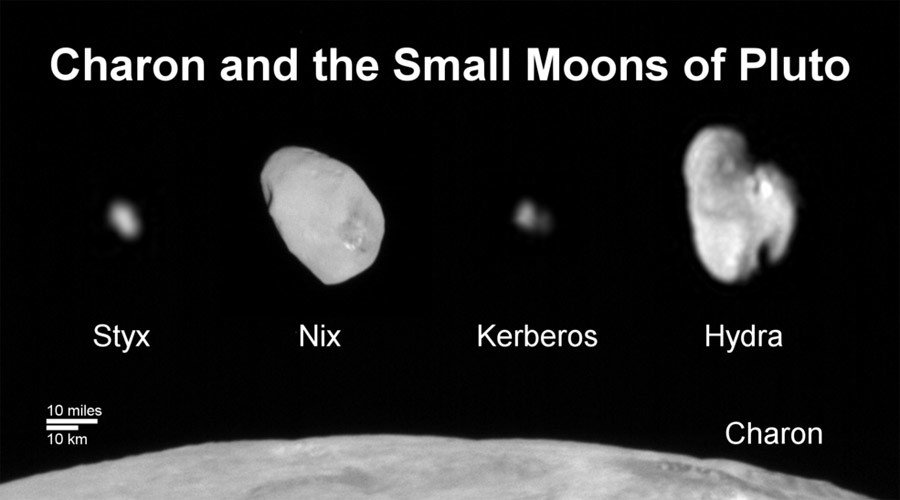NASA releases images of Pluto’s smallest moon for first time [PHOTOS]
![NASA releases images of Pluto’s smallest moon for first time [PHOTOS]](https://mf.b37mrtl.ru/files/2015.10/article/562a8001c3618857748b45b5.jpg)
Meet Kerberos, the smallest of Pluto’s five moons. At just five miles across, the tiny moon has defied the expectations of scientists, who now can present the whole Pluto family.
Though the pictures were taken during a flyby on July 14, they were only recently received by NASA due to the delay caused by the massive distance between the New Horizons probe and Earth.
“Once again, the Pluto system has surprised us,” said Hal Weaver, New Horizons Project Scientist from the Johns Hopkins University Applied Physics Laboratory in Maryland, in a statement.
READ MORE: 3,500m icy peaks of Pluto: NASA reveals striking images of dwarf planet (PHOTOS)
The new images show that Kerberos has two lobes, possibly created when to two smaller bodies merged. The object’s larger lobe is judged to be about 5 miles (8 km) across. The smaller lobe is roughly 3 miles (5 km) in diameter.
While Pluto’s other known moons – Charon, Nix, Hydra and Styx – all turned out to be what scientists had expected, the new images prove that their preconceptions of Kerebos had been wrong. The newly-discovered moon was expected to be larger than Styx, the dwarf planet’s other small moon, but is actually the same size, or even smaller.

Before the New Horizons flyby, scientists tried to determine the characteristics of the moon using less precise means. Researchers used the Hubble Space Telescope to “weigh” Kerberos by measuring the influence of its gravity on neighboring objects. That influence is relatively powerful, and coupled with a reflective, perhaps ice-covered surface, that makes it highly luminous, scientists theorized that Kerberos was much larger but covered with dark material.
READ MORE: NASA finds own ‘Mordor’ at Pluto’s moon Charon
“Our predictions were nearly spot-on for the other small moons, but not for Kerberos,” said New Horizons co-investigator Mark Showalter of the SETI Institute in California in a statement. The new findings are expected to lead to a better understanding of Pluto’s satellite system.
Kerberos was first discovered when astronomers were searching for rings around Pluto with the Hubble Space Telescope in 2011. It is named after the three-headed dog from Greek mythology. Pluto’s other four moons, as well as the dwarf planet itself, are also named after mythological figures associated with the underworld.












